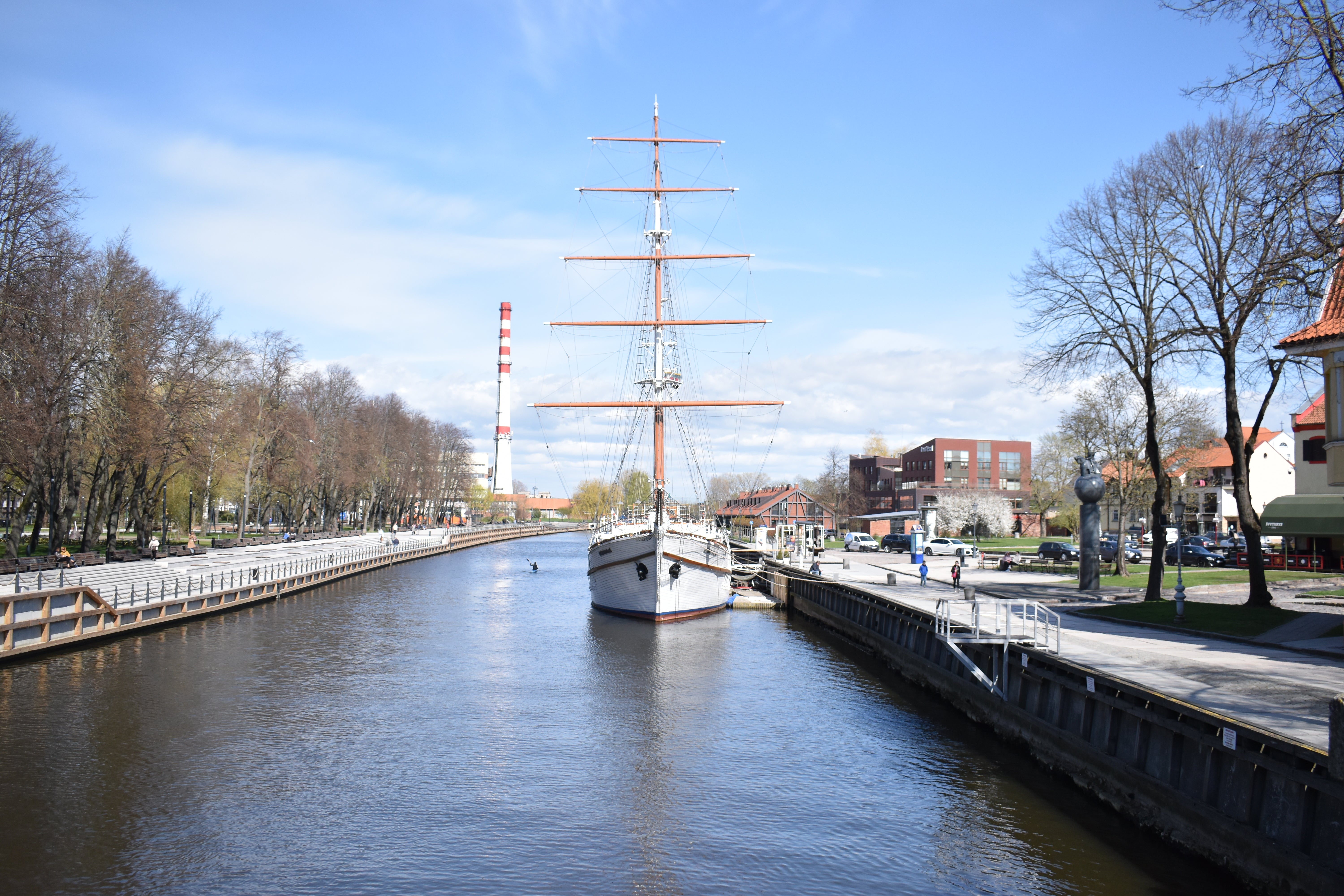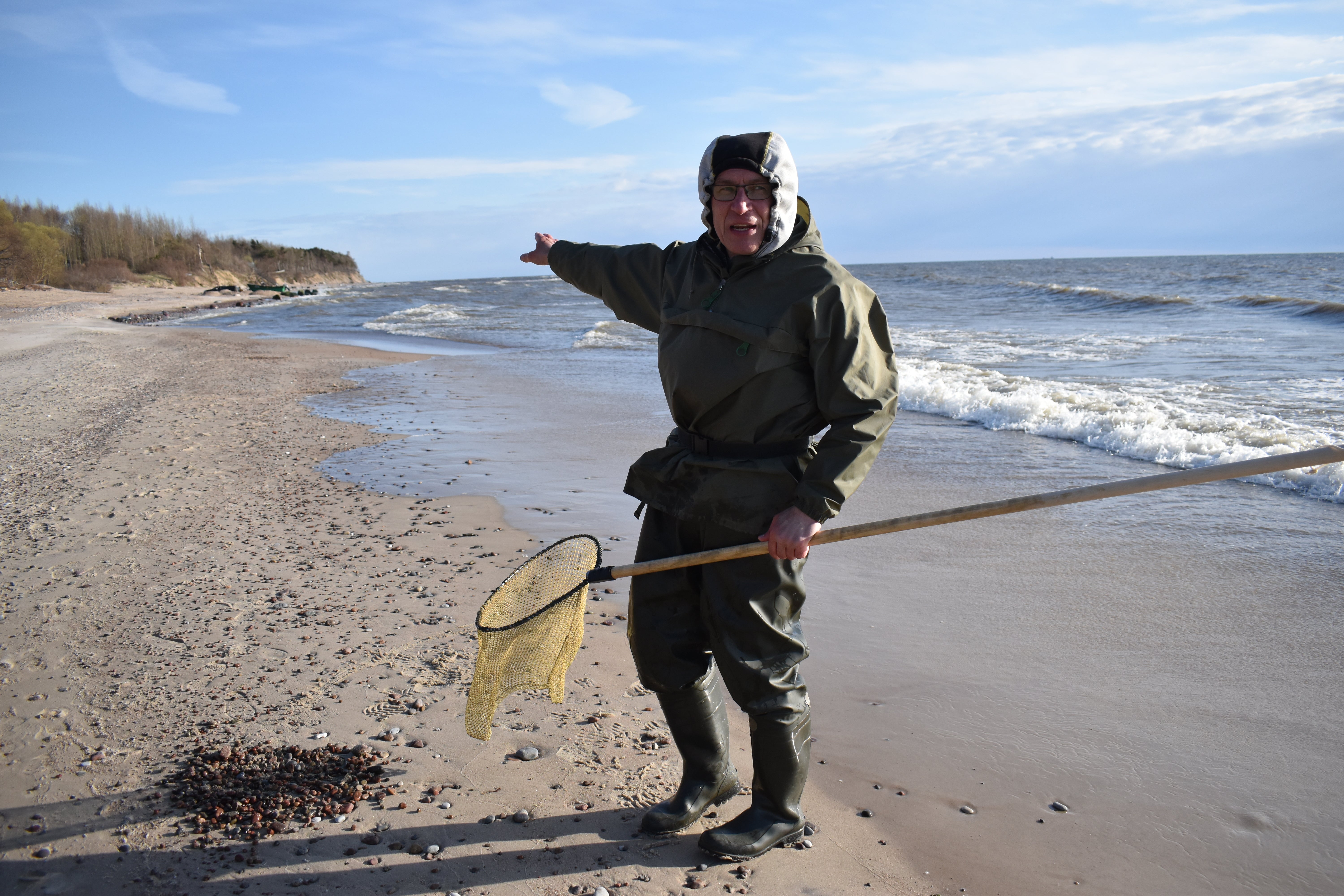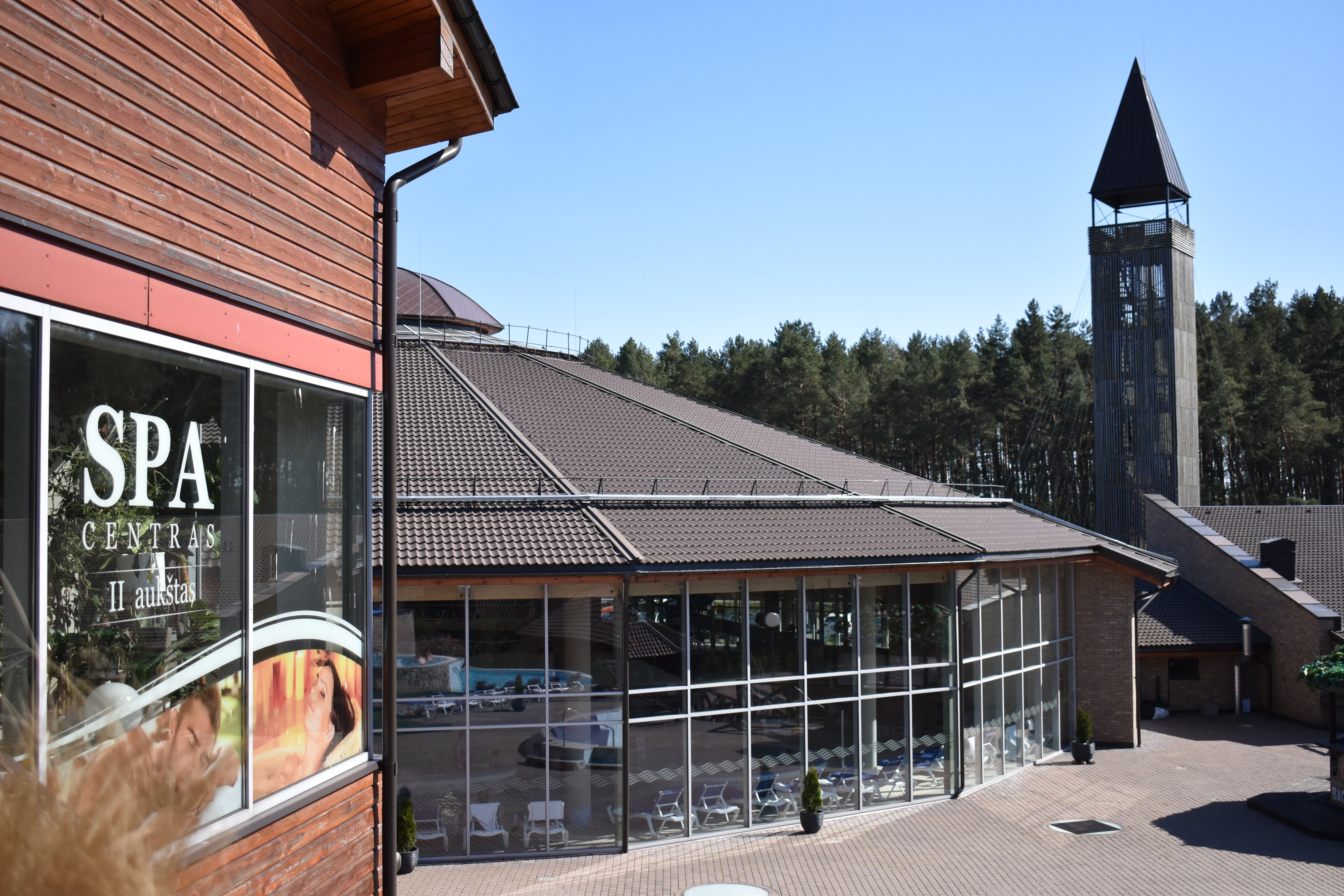Amber alert: On the trail of Lithuanian gold
Heidi Fuller-Love hunts for hidden gems, wards off evil spirits and indulges in natural amber treatments on a unique Baltic tour

The storm that had turned the calm sheet of the Baltic Sea into a wave-tossed war zone during the night abated towards dawn. In the cotton-thick misty light above Melnrage beach I could see that the amber pickers were already hard at work.
“We love storms,” says Igoris Osnac, my amber guide, as he eagerly pulls on the three pairs of socks, rubber overalls and big boots he’ll wear to confront the icy waters below.
I’d arrived in the seaside resort of Klaipeda the previous day, after a three-hour drive from Vilnius along Holland-flat roads fringed by sparse, silver-legged birch forests that were planted here during the 50 years of Soviet occupation.

I spied wood-framed dwellings – like Lego houses, with their neat gardens and red, blue and green roofs – and telegraph poles topped with the tyre-sized nests of Lithuania’s national bird, ciconia ciconia (the white stork), between the trees. When I stopped by the roadside near Kaunas for a lunch of salo-cured pork slabs between treacle-dark slices of rye bread, I could hear the hungry beaks of baby storks clattering like castanets.
After checking into the Old Mill – a boutique hotel at the heart of Klaipeda’s industrial harbour overlooking the Curonian Spit, whose wood-framed facade reminded me of the ribs of a half-built boat – I set off to meet Igoris in his museum-office near Klaipeda to learn about “Gintaro gaudymo paslaptys”. Translation: the secrets of catching amber.
Mentioned in Homer’s Odyssey, Baltic amber is traditionally used to craft jewellery in Lithuania, but has also been used to treat diseases and protect against evil spirits in the past. For centuries it was believed that so-called “Lithuanian gold” was made from the tears of birds or the urine of animals, before it was discovered that this orange substance – which also comes in red, green and milky white – is actually fossilised resin that was carried by rivers to the Baltic Sea some 50 million years ago.
It’s one of our pagan rituals – amber dust makes your dreams come true
Looping along 90 miles of pine-studded, dune-spiked Baltic coast road from the seaside resort of Nida in the west to Atostogų parkas (home of the world’s first amber sauna) further east, Lithuania’s amber trail is the minor branch of a major route that once linked Venice to St Petersburg. “You could say it was amber’s version of the Silk Road,” Igoris says.
The walls of Igoris’s office are covered in treasure hunting maps dotted with “X marks the spot” crosses, and his official guide’s pass has a photo of him in a wide-brimmed panama hat. I tell him he looks like Indiana Jones.
“I see myself more as Crocodile Dundee,” he retorts, throwing a handful of amber dust in the air and setting light to it, creating a flare like the tail of a comet. “It’s one of our pagan rituals – amber dust makes your dreams come true,” he says.

We drive along the coast in Igoris’s fish-scented van and park near a cemetery dotted with the graves, white as whalebones, of fishermen who lost their lives at sea. Although amber is mined just over the border in Kaliningrad, Lithuania’s main product is drift amber plucked from the wave-torn shores by dedicated teams of amber fishers (or gintarautojai) like Igoris who spend their days – and sometimes their nights – on these wide, wave-tossed beaches seeking Lithuanian gold. This dedication seems less surprising when you learn that raw Baltic amber can sell for as much as $15 (£12) per gram – even more for pieces with so-called inclusions: fossilised insects or sometimes lizards trapped inside.
As we slither and slide along high dunes to reach the booming Baltic Sea far below, the late April sun is hot on my face, but the chill wind whistling around my ears is razor-sharp. Luckily, Vilija Dovydėnaitė, my knowledgeable guide back in Vilnius, had warned me to dress in layers. “Lithuanian weather is as unpredictable as Putin,” she’d joked as a car whizzed by sporting Ukrainian flags.
“When the sea is wild it brings in amber, but you have to have a quick eye to catch it,” Igoris says now as he hands me a long-handled net like the ones I used to catch shrimps with as a child. “Watch the birdies,” he says, pointing to a huddle of seagulls bobbing like pale boiled eggs on the furled crests far out to sea. “They want what we want, because the bunches of weed and sticks that trap shrimps and fish will also trap amber – amber is lighter than normal rocks and it often drifts to shore tangled in old pieces of wood or seaweed. When we see the gulls, we know it’s a good spot.”
For a Lithuanian amber is not just a beautiful thing, it’s also an intimate part of our country’s cultural history
After fossicking for several hours, however, we find only a handful of amber beads. I tell Igoris they’re probably the teardrops of mermaid Jurate, who – according to Lithuanian folk tales – wept amber for her fisherman lover who was killed by the jealous god of thunder, Perkūnas. “Jurate is nothing to do with it – there was just too much wind so the amber drifted back out to sea,” Igoris replies ruefully.
That evening in Toli nuo klasikos, a quirky manor house restaurant near Klaipeda with flamingo pink walls and tables decked with hip bric-a-brac, the talk is all about the Russian invasion of Ukraine. Serving me vivid green spears of asparagus in a lemon sauce and a velvety dip made with wild garlic, chef Lina Žilevičė says: “We got rid of the Soviets 30 years ago and we don’t want them back here, thank you very much!”
Another arrow-straight road – through pine trees this time – takes me to Palanga the following day. Home to the country’s famed amber museum, housed in what was once Count Feliks Tyszkiewycz’s neo-baroque summer palace, Palanga’s leafy streets are lined with elegant wooden villas where wealthy Russians have flocked to spend their holidays ever since Soviet times. Naturally, they’re currently deserted.

Local guide Mindaugas Brazauskas shows me around the vast museum, pointing out cases of extravagantly wrought amber jewellery and other quirky artefacts, including the Sun Rock, a cannonball -sized nugget that weighs more than 3.5kg, and a twee miniature train carved out of a glowing hunk of resin.
Over lunch – cool purple bowls of beetroot borscht and cepelinai dumplings stuffed with spicy meat – at stylish restaurant Villa Komoda, Brazauskas says: “For a Lithuanian amber is not just a beautiful thing, it’s also an intimate part of our country’s cultural history. We believe in amber’s mystical powers wholeheartedly – and that’s probably why the Soviets tried so hard to ban it.”
At Atostogų Parkas, a wellness complex on a scrubby piece of land just outside the small town of Uzpelkiai, I experience the resin’s magical powers for myself.
With its blocky, rather characterless rooms and stern unsmiling staff, there’s a lingering sense of Soviet summer camps about the complex, but the facilities – which include several large pools and a unique sauna with walls pebble-dashed with specks of amber – are clean and competently run.

As a long-time eczema sufferer, I plan to try an amber treatment on my corrugated skin.
“Scientific research shows that Baltic amber contains succinic acid which strengthens your immunity and works as a natural antibiotic,” spa manager Line tells me as she bastes me in a creamy lotion made with amber dust before wrapping me in clingfilm.
After the amber wrap, my skin feels silky soft, and I can’t help but crow: “It’s miraculous!”
“Well, don’t expect me to be surprised – I’m Lithuanian,” she retorts, with the merest hint of Soviet-style sarcasm.
Travel essentials
Getting there
Trying to fly less?
It’s possible to travel by train all the way from the UK to Vilnius via Berlin and Warsaw.
Fine with flying?
Ryanair, Wizz Air and Lot fly direct from the UK to Vilnius.
Staying there
The Artagonist in Vilnius has rooms from €88; the Old Mill in Klaipeda has rooms from €56; The Moxy in Kaunas has rooms from €61; Atostogų Parkas has rooms from €45 and treatments from €20
Getting around
Roads in Lithuania are generally well-maintained. Budget car hire at Vilnius airport from €20 per day. For a more sustainable way to travel, use the trains and buses which are clean and cheap.
Tour guides
Tours with Igoris Osnac can be booked at gintalinis.lt/entours
Tours with Mindaugas Brazauskas can be booked at lad.lt/brazauskasmindaugas
More information
Find out more: lithuania.travel






Join our commenting forum
Join thought-provoking conversations, follow other Independent readers and see their replies
Comments